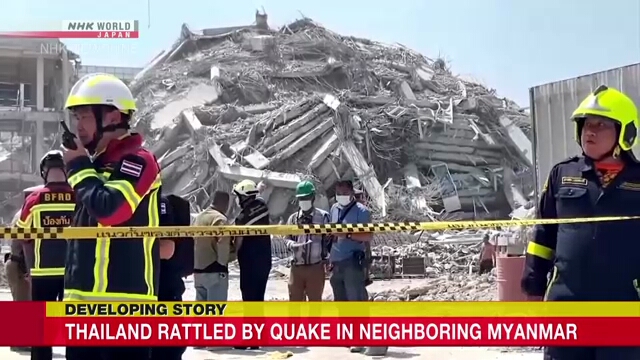Myanmar Earthquake: Southeast Asia Tremors Send Shockwaves Through the Region
A powerful earthquake struck Myanmar (also known as Burma) on [Insert Date of Earthquake], sending tremors across Southeast Asia and prompting fears of widespread damage and casualties. The quake, measuring [Magnitude] on the Richter scale, struck at [Time] local time, with its epicenter located approximately [Distance] from [Nearest City/Region]. This event underscores the region's vulnerability to seismic activity and highlights the urgent need for improved earthquake preparedness.
The Impact of the Myanmar Earthquake
The full extent of the damage caused by the earthquake is still being assessed, but initial reports indicate [Summary of damage - e.g., collapsed buildings, infrastructure damage, casualties]. The mountainous terrain in the affected region is complicating rescue and relief efforts. Communications have been disrupted in some areas, hindering the flow of information and adding to the challenges faced by emergency responders.
Casualties and Injuries:
- Official figures report at least [Number] deaths and [Number] injuries. These numbers are expected to rise as rescue teams reach more remote areas.
- Hospitals in the affected region are overwhelmed, struggling to cope with the influx of injured individuals.
- International aid organizations are mobilizing to provide medical assistance and support.
Infrastructure Damage:
- Reports indicate significant damage to buildings, roads, and bridges in several towns and villages.
- The earthquake has disrupted essential services, including power and water supplies.
- Damage to critical infrastructure could hinder long-term recovery efforts.
Regional Tremors and Aftershocks:
The earthquake's tremors were felt across a wide swathe of Southeast Asia, including [List countries affected – e.g., Thailand, Laos, Bangladesh]. While the impact was less severe in these areas, the widespread shaking serves as a stark reminder of the region's susceptibility to seismic events. Several aftershocks have already been reported, further complicating the situation and raising concerns about potential further damage.
Neighboring Countries Respond:
Neighboring countries are extending support to Myanmar, offering assistance in the form of rescue teams, medical supplies, and financial aid. [Mention specific examples of aid offered by neighboring countries]. International organizations like the UN and Red Cross are also coordinating relief efforts.
Earthquake Preparedness in Southeast Asia:
The Myanmar earthquake highlights the critical need for improved earthquake preparedness throughout Southeast Asia. Many countries in the region are situated in seismically active zones, making them vulnerable to future earthquakes. Investing in robust building codes, early warning systems, and public awareness campaigns is essential to mitigate the impact of future seismic events.
Key Steps for Earthquake Preparedness:
- Strengthening Building Codes: Implementing stricter building codes to ensure structures can withstand seismic activity.
- Developing Early Warning Systems: Investing in advanced systems to provide timely warnings before earthquakes strike.
- Public Awareness Campaigns: Educating the public about earthquake safety measures and emergency response protocols.
- Disaster Preparedness Drills: Conducting regular drills to prepare communities for earthquake scenarios.
Conclusion: A Call for Global Solidarity
The devastating earthquake in Myanmar underscores the urgent need for global cooperation in disaster relief and preparedness. The international community must work together to provide immediate assistance to those affected and support long-term recovery efforts. Furthermore, investing in earthquake preparedness measures across Southeast Asia is crucial to mitigating the impact of future earthquakes and protecting vulnerable communities. We must learn from this tragedy to build a more resilient future.
Keywords: Myanmar Earthquake, Southeast Asia Earthquake, Burma Earthquake, Earthquake Relief, Disaster Relief, Seismic Activity, Earthquake Preparedness, Aftershocks, Tremors, [Insert other relevant keywords].
(Note: Remember to replace the bracketed information with accurate and up-to-date details.)
